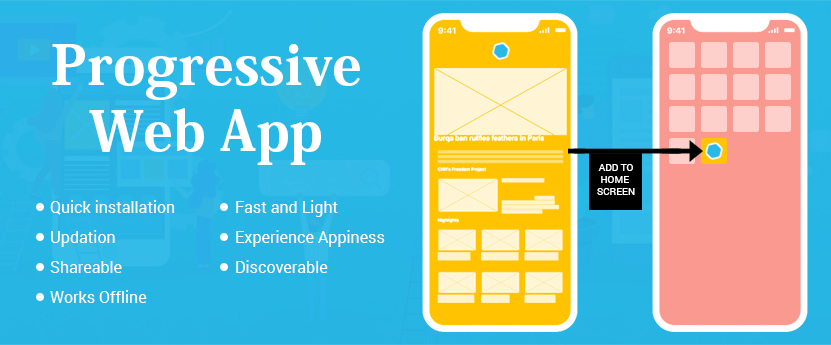Index Surge: Amplifying Your Insights
Stay updated with the latest trends and news across various industries.
Progressive Web Apps: The Secret Ingredient for a Flawless User Experience
Discover how Progressive Web Apps can transform your site into a seamless, user-friendly experience that keeps visitors coming back!
Why Progressive Web Apps are Revolutionizing User Experience
Progressive Web Apps (PWAs) are redefining the landscape of user experience by combining the best features of web and mobile applications. They offer fast loading times, a seamless interface, and the ability to work offline, significantly enhancing user engagement. With their responsive design, PWAs adapt to any device, ensuring that users have a consistent and smooth experience, whether they are on a smartphone, tablet, or desktop. The offline capabilities mean that users can access content without a stable internet connection, making it particularly useful in areas with limited connectivity. This transformative approach not only enhances user satisfaction but also encourages users to return, ultimately leading to higher conversion rates.
Moreover, Progressive Web Apps improve performance through features like service workers, which allow for background processes to cache content and manage resource requests efficiently. This ensures that PWAs can load instantly, providing a level of speed and reliability akin to native applications. Additionally, the installation process of a PWA is straightforward—users can simply add the app to their home screen without the hassle of traditional app store downloads. By removing these barriers, PWAs are revolutionizing user experience, making digital interaction faster, more intuitive, and accessible for everyone, thus paving the way for the future of app development.

Key Features of Progressive Web Apps that Enhance User Engagement
Progressive Web Apps (PWAs) offer a unique blend of web and mobile applications that significantly enhance user engagement. One of the key features of PWAs is their ability to function offline or in low-quality network conditions. This is achieved through service workers, which allow users to access content even when they are not connected to the internet. As a result, this increases the likelihood that users will return to the application, as they can interact with it anytime, enhancing retention rates. Furthermore, PWAs provide fast loading times, which is critical in today’s fast-paced digital environment, ensuring users don’t abandon the app for slower alternatives.
Another notable feature of PWAs is their responsive design, enabling seamless performance across various devices, including smartphones, tablets, and desktop computers. This adaptability ensures that users have a consistent and satisfying experience, regardless of how they choose to access the app. Additionally, PWAs support push notifications, allowing businesses to re-engage users with timely updates and offers directly to their devices. By facilitating easy access and ongoing interaction, these features collectively enhance user engagement and foster a stronger connection between users and brands.
How to Implement Progressive Web Apps for Optimal Performance
Implementing Progressive Web Apps (PWAs) for optimal performance involves several essential steps that enhance user experience and engagement. First, ensure your application is served over HTTPS to provide a secure environment. Next, utilize a service worker to cache assets and handle network requests. This approach allows your PWA to load quickly, even in low network conditions. In addition, focus on adopting a responsive design that allows your app to perform seamlessly across various devices and screen sizes.
Furthermore, optimize the loading time of your PWA by minimizing the file size of your JavaScript and CSS files while implementing lazy loading for images and non-essential content. Implementing web app manifests can also enhance your app's capabilities by enabling users to install it on their home screens. Finally, regularly audit your PWA with tools like Lighthouse to assess performance, accessibility, and best practices, ensuring your app continues to meet user expectations and achieves its full potential.